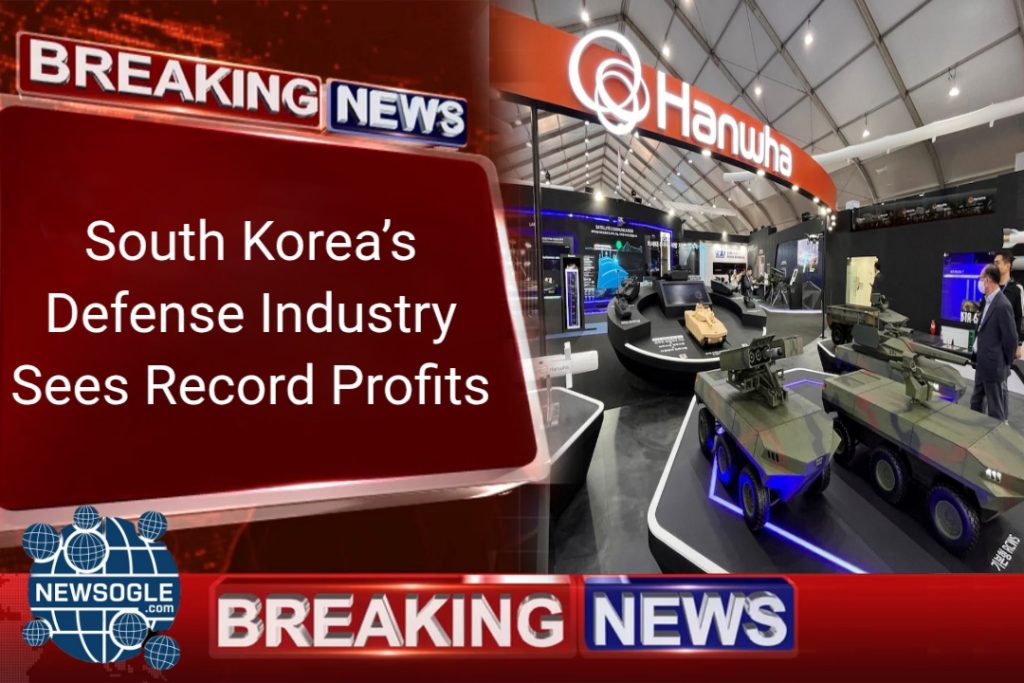
SEOUL – In a dramatic and unprecedented surge, South Korea’s defense industry has announced record-breaking profits for the first half of 2025, marking its most successful performance in history. The remarkable financial windfall is a direct consequence of a confluence of global geopolitical factors, most notably the ongoing conflict in Ukraine and the resulting heightened demand for military hardware across Europe and beyond. Once a defense manufacturer focused primarily on its domestic market and exporting small-scale systems, South Korea has now firmly established itself as a major global arms supplier, directly competing with traditional powerhouses such as the United States, Germany, and France.
The success of what has been dubbed “K-Defense” is more than just a passing phenomenon; it represents a strategic pivot that has been years in the making. The South Korean government and its leading defense contractors – including Hanwha Aerospace, Korea Aerospace Industries (KAI), and LIG Nex1 – embarked on an aggressive export-oriented strategy in the early 2020s. This proactive approach, combined with a fortuitous geopolitical moment, has propelled the industry into the global spotlight. With their formidable manufacturing capabilities, decades of technological development, and a reputation for producing cost-effective and reliable equipment, South Korean firms were perfectly positioned to capitalize on the urgent need for military replenishment and modernization.
The Russia-Ukraine war proved to be the pivotal catalyst. The protracted conflict has exposed significant gaps in the military readiness of many European nations, particularly those that had reduced their defense spending in the post-Cold War era. With their own stockpiles depleted from supplying Ukraine and their indigenous production lines struggling to ramp up to meet the surge in demand, many NATO allies and European partners found themselves in a bind. This is where South Korea stepped in. Unlike many Western counterparts, South Korean defense companies have a proven track record of mass-producing military equipment with a speed and efficiency that is unmatched. This ability to deliver large quantities of combat-ready platforms on tight deadlines has been a game-changer.
The centerpiece of South Korea’s export boom is undoubtedly the K9 Thunder self-propelled howitzer. Widely regarded as one of the world’s most advanced artillery systems, the K9 Thunder boasts superior firepower, high mobility, and a fully automated ammunition handling system. Its proven combat effectiveness and a robust supply chain made it an instant favorite for countries looking to replace their aging Soviet-era artillery. This has led to a cascade of multi-billion-dollar contracts that have reshaped the global artillery market.
Another key product driving the industry’s success is the FA-50 Golden Eagle light combat aircraft. A versatile and affordable fighter jet, the FA-50 has found a niche market among countries that need to modernize their air forces but cannot afford the prohibitively expensive F-35s or other high-end Western jets. KAI has secured major deals for the FA-50, positioning the aircraft as a top choice for a new generation of air forces. Similarly, the K2 Black Panther tank, with its advanced armour, a powerful engine, and a sophisticated fire control system, is becoming a serious contender in the global main battle tank market. Its competitive pricing and rapid delivery schedules have made it an attractive alternative to Western-made tanks.
The most prominent example of South Korea’s newfound dominance is the series of mega-deals signed with Poland. Following the onset of the war in Ukraine, Poland, which shares a border with the conflict zone, was among the first to recognize its urgent need for military modernization. In a historic agreement, Warsaw committed to purchasing hundreds of K2 tanks, K9 howitzers, and FA-50 jets from South Korea. The sheer scale and speed of these deals cemented South Korea’s reputation as a reliable and efficient partner. The agreement was more than a simple transaction; it included provisions for technology transfer and co-production, ensuring that Poland could eventually manufacture and maintain the equipment on its own soil. This “partnership model” has become a hallmark of South Korea’s approach, differentiating it from competitors who are often less willing to share technology.
Beyond Poland, South Korea is making significant inroads into other markets. Deals for K9 howitzers have been signed with countries in Europe, Asia, and the Middle East, while the FA-50 has found buyers in Southeast Asia and Africa. Norway, Egypt, and Australia are among the nations that have shown keen interest in South Korean military hardware, either for direct purchase or for joint development projects. This broad market penetration is a testament to the versatility and quality of South Korean products, which are designed to operate effectively in a variety of environments. The nation is no longer just selling weapons; it is offering a comprehensive package that includes training, maintenance, and logistical support, building long-term relationships with its clients.
The economic implications of this defense boom are profound. The record profits are not just filling the coffers of private companies; they are injecting billions of dollars into the South Korean economy. This revenue is being channeled into massive investments in research and development, ensuring that the next generation of “K-Defense” products will be even more advanced. The defense industry is creating thousands of high-skilled jobs, from engineers and technicians to software developers and project managers. It is also boosting related industries, such as electronics, steel, and machinery, creating a powerful multiplier effect that is strengthening the entire economic base. The defense sector is on track to become a new pillar of South Korea’s economy, standing alongside its semiconductor, automotive, and shipbuilding industries.
From a geopolitical perspective, South Korea’s emergence as a major arms exporter is equally significant. It elevates the nation from a regional military power to a key global player. By supplying military equipment to key allies, South Korea is deepening its strategic relationships and enhancing its diplomatic influence. It is becoming an indispensable partner in the global security landscape, with a voice that is increasingly heard and respected. This new role also brings with it new responsibilities. As a major arms supplier, South Korea will need to navigate a complex ethical and political landscape, ensuring that its weapons are not sold to regimes that could misuse them. The government and industry must also manage the potential friction with traditional arms exporters who now view South Korea as a formidable competitor.
Looking to the future, the challenge for South Korea will be to sustain this momentum. The current geopolitical climate has created a perfect storm for the defense industry, but this may not last forever. To remain at the top, South Korean firms must continue to innovate, investing heavily in next-generation technologies. The focus is now shifting to unmanned systems, artificial intelligence-powered platforms, and hypersonic weapons, all of which will define the future of warfare. South Korean companies are already making strides in these areas, but they will face fierce competition from global rivals. Supply chain resilience, a critical factor in their recent success, will also need to be a top priority, as will adapting to the evolving needs of their global customers.
In conclusion, South Korea’s defense industry is in the midst of a historic boom. The record profits in mid-2025 are not a fluke but the result of a deliberate strategic pivot, a strong manufacturing base, and a timely response to global demand. The Russia-Ukraine war provided the opportunity, and South Korea’s defense firms seized it with a combination of speed, efficiency, and a customer-centric approach. The rise of “K-Defense” is reshaping the global arms market, bolstering South Korea’s economy, and elevating its geopolitical standing. As the nation continues to build on this success, it is clear that South Korea is no longer just a consumer of defense technology but a formidable and indispensable supplier of it.




